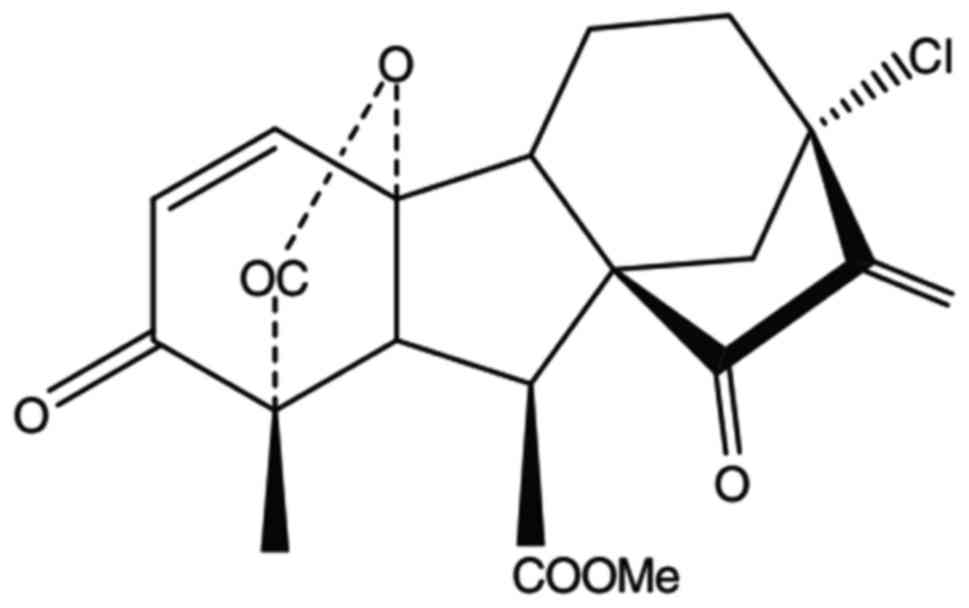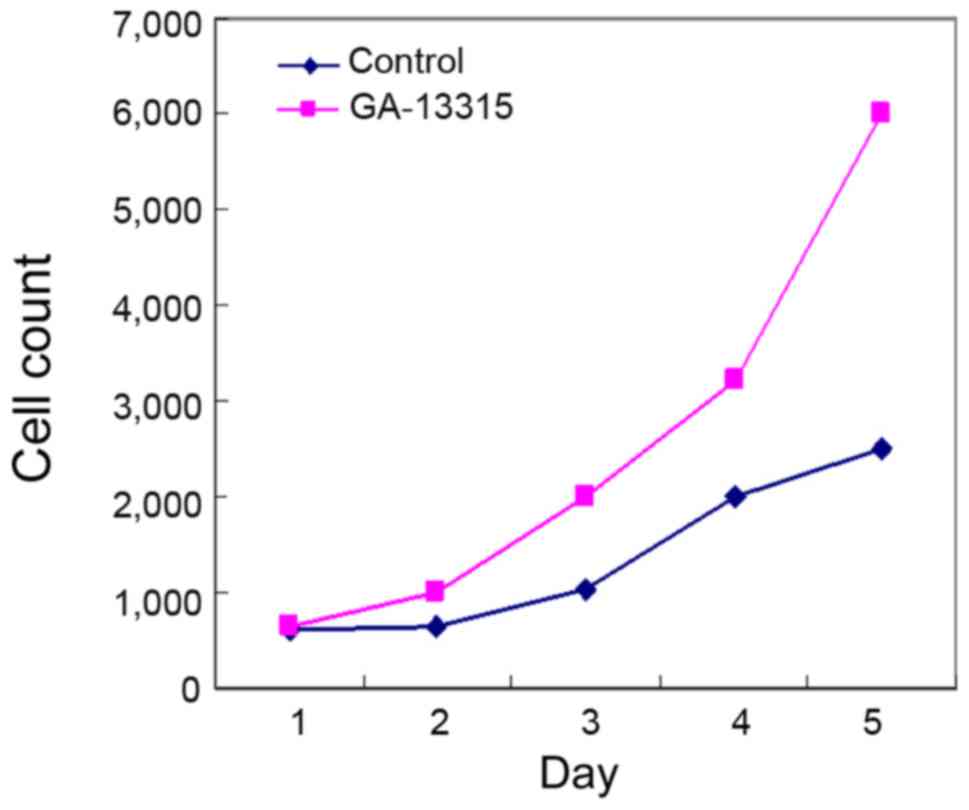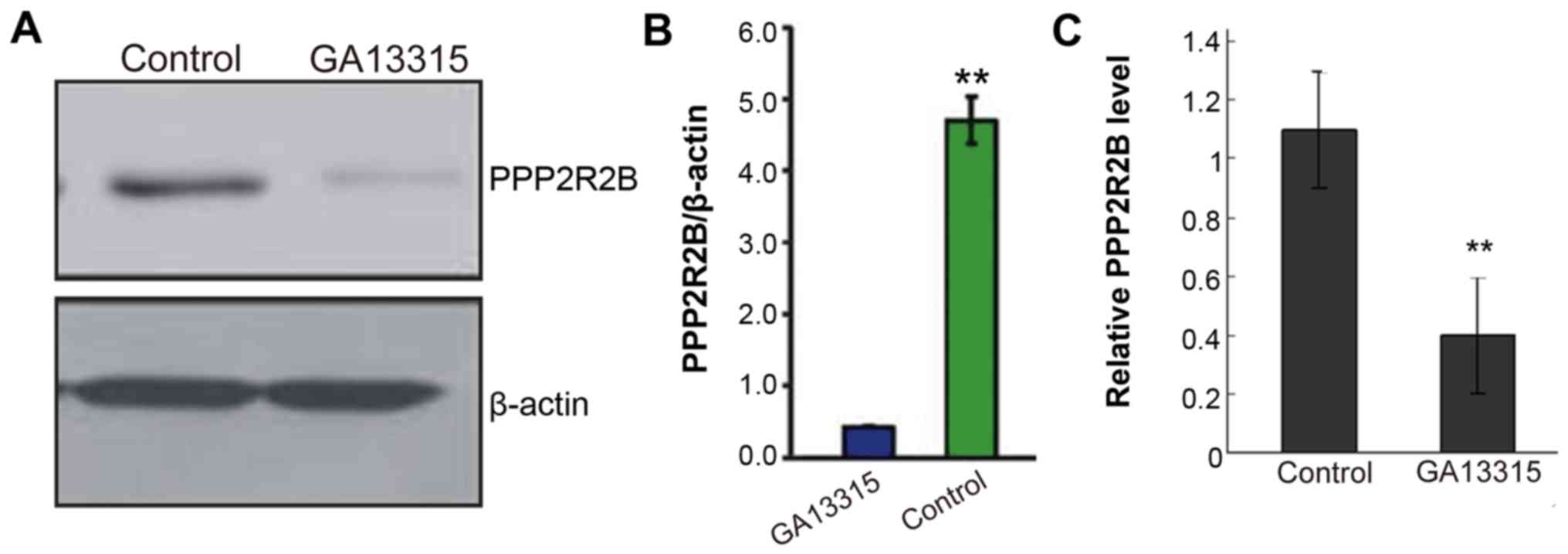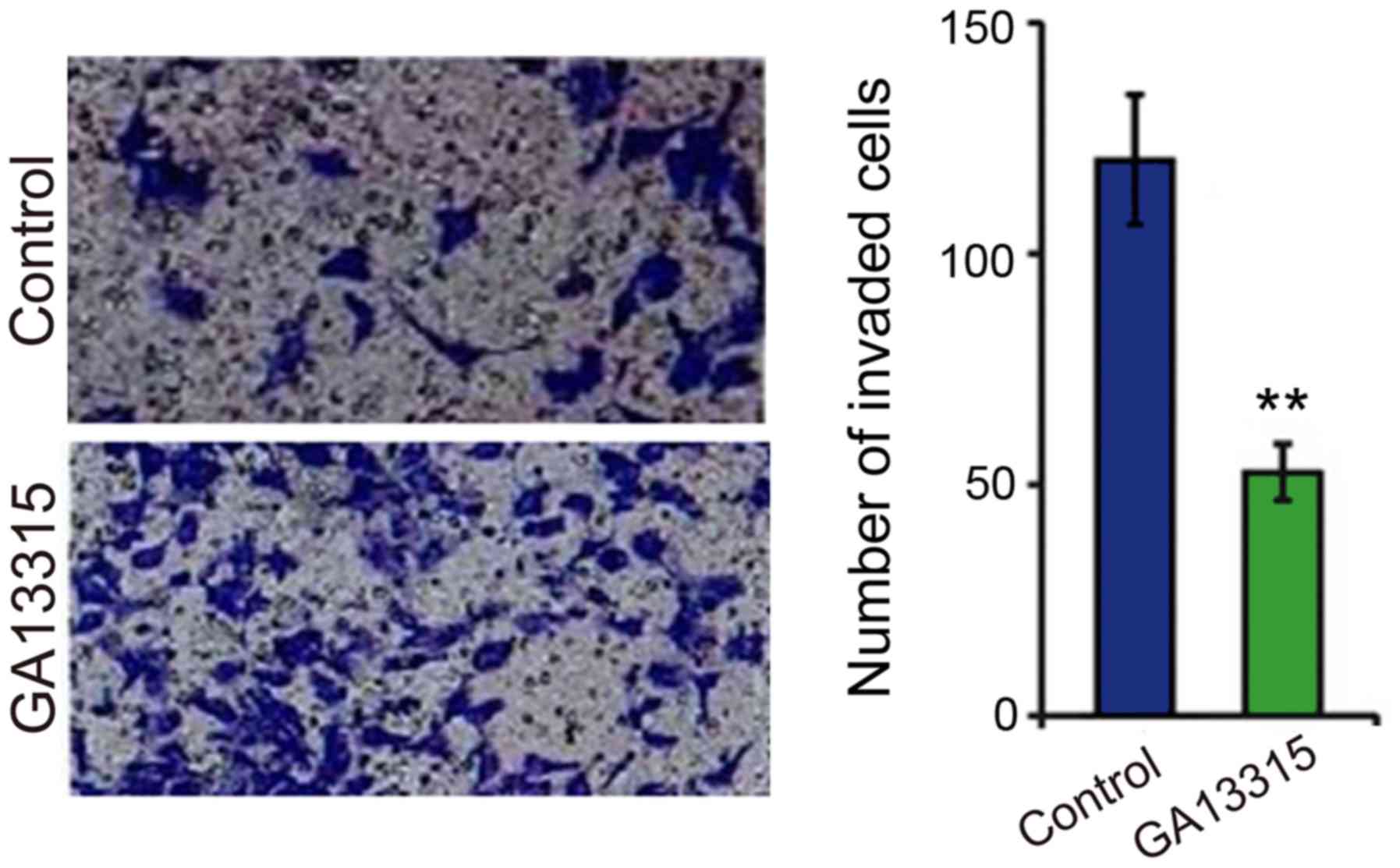Effects and mechanism of GA-13315 on the proliferation and apoptosis of KB cells in oral cancer
- Authors:
- Published online on: May 29, 2017 https://doi.org/10.3892/ol.2017.6279
- Pages: 1460-1463
-
Copyright: © Shen et al. This is an open access article distributed under the terms of Creative Commons Attribution License.
Metrics:
Total
Views: 0 (Spandidos Publications: | PMC Statistics:
)
Total PDF Downloads: 0 (Spandidos Publications: | PMC Statistics:
)
Abstract
The present study describes the effects and mechanism of GA-13315 on the proliferation and apoptosis of KB cells in oral cancer. Oral cancer is twice as common in men than women. More than 90% of oral cancers in men and 85% in women are linked to lifestyle and environmental factors. PPP2R2B methylation may be associated with survival and prognosis in patients with gliomas. In tumor cell proliferation and apoptosis, the mechanism of PPP2R2B remains unclear. In the present study, we found that PPP2R2B expression of H1299 cells is significantly decreased after being treated by GA‑13315. KB cells were isolated from patients with oral cancer and treated with GA‑13315 (5 µM). Cells without GA‑13315 treatment served as the control group. An MTT experiment was performed to detect the post‑treatment cell growth between the groups. A flow cytometry was used to detect cell apoptosis. Western blot analysis and quantitative polymerase chain reaction methods were used for detecting the expression of PPP2R2B. Compared with the control group, the cell proliferation of the treatment group slowed after being treated with GA‑13315. The difference was statistically significant (P<0.05). Western blotting showed that the PPP2R2B expression of cells was reduced after being treated with GA‑13315. Compared with the control group, the difference was statistically significant (P<0.05). According to results from the Transwell migration assay, the invasiveness of the KB cells of oral cancer were weakened after being treated by GA‑13315. GA‑13315 can accelerate the apoptosis of oral cancer cells and presents a dose correlation. The biological effect is exerted through the decrease of PPP2R2B.















